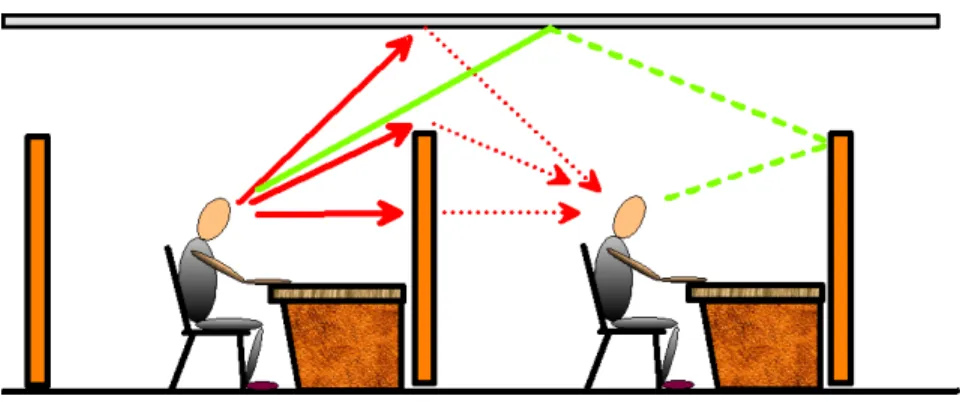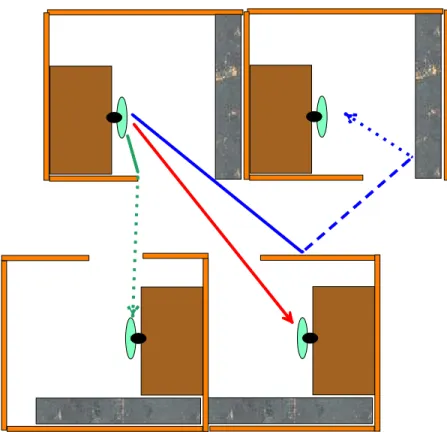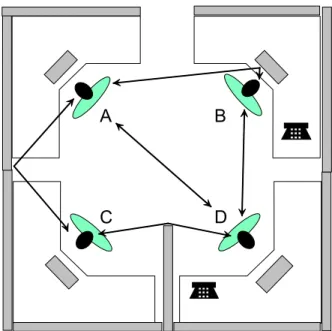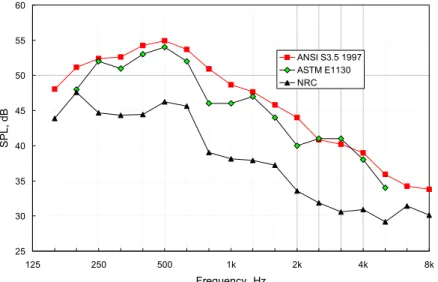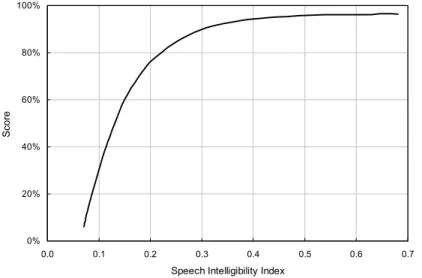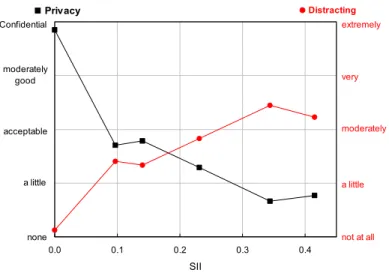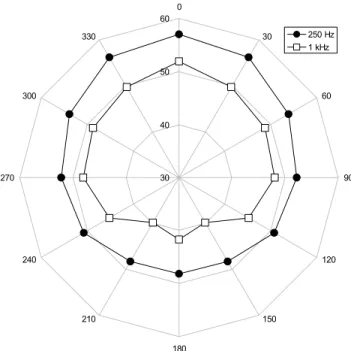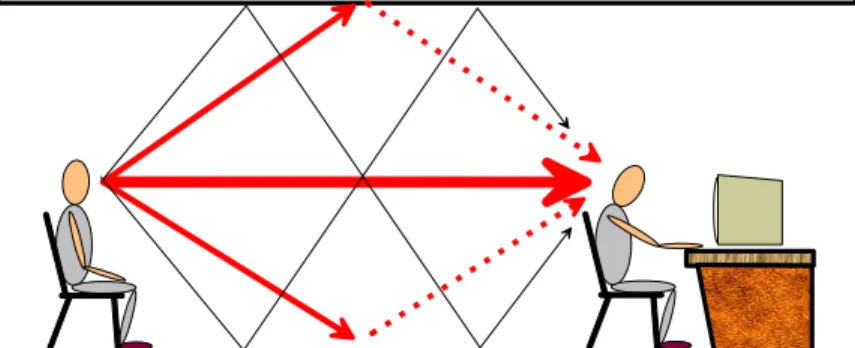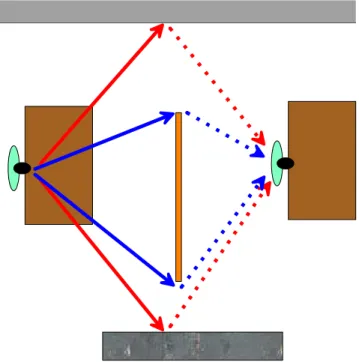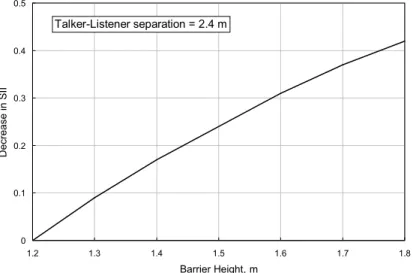Publisher’s version / Version de l'éditeur:
Vous avez des questions? Nous pouvons vous aider. Pour communiquer directement avec un auteur, consultez la première page de la revue dans laquelle son article a été publié afin de trouver ses coordonnées. Si vous n’arrivez pas à les repérer, communiquez avec nous à PublicationsArchive-ArchivesPublications@nrc-cnrc.gc.ca.
Questions? Contact the NRC Publications Archive team at
PublicationsArchive-ArchivesPublications@nrc-cnrc.gc.ca. If you wish to email the authors directly, please see the first page of the publication for their contact information.
https://publications-cnrc.canada.ca/fra/droits
L’accès à ce site Web et l’utilisation de son contenu sont assujettis aux conditions présentées dans le site LISEZ CES CONDITIONS ATTENTIVEMENT AVANT D’UTILISER CE SITE WEB.
Research Report (National Research Council of Canada. Institute for Research in
Construction), 2004-03-01
READ THESE TERMS AND CONDITIONS CAREFULLY BEFORE USING THIS WEBSITE.
https://nrc-publications.canada.ca/eng/copyright
NRC Publications Archive Record / Notice des Archives des publications du CNRC :
https://nrc-publications.canada.ca/eng/view/object/?id=be4e91b9-71aa-4010-826d-05cc6dbc534d https://publications-cnrc.canada.ca/fra/voir/objet/?id=be4e91b9-71aa-4010-826d-05cc6dbc534d
Archives des publications du CNRC
For the publisher’s version, please access the DOI link below./ Pour consulter la version de l’éditeur, utilisez le lien DOI ci-dessous.
https://doi.org/10.4224/20377814
Access and use of this website and the material on it are subject to the Terms and Conditions set forth at
Acoustical Design Guide for Open Offices
Acoustical Design Guide for Open Offices
Warnock, A.C.C.
IRC-RR-163
March 2004
INTRODUCTION
This design guide was prepared as part of a research project funded by PWGSC to investigate speech privacy in open-plan offices. Two major types of work area in open offices are currently in vogue:
• cubicles where individual workstations are delineated by barriers and
• the more open “team-style” where groups of workers have
unrestricted visual access among themselves but are shielded from adjacent work areas by barriers.
Within the team-style work area, where sound paths are usually quite unobstructed, speech can be very intrusive. Since team-style work areas are usually separated from each other by fairly high barriers, offices incorporating this type of work area have the same problems with intrusive speech between work areas as found in offices having mainly cubicles.
Thus, this guide gives, without detailed explanation, sets of
recommendations to reduce the intrusiveness of speech in both types of office. (More information is available in the appendix and related reports.) Criteria are first given for reducing speech intrusion between cubicles because the same factors are important when considering sound transmission between team-style work areas. The problems specific to sound transmission within team-style areas are then dealt with. While it is possible to estimate the degree of speech intrusion between neighboring workstations, it is not considered a reasonable approach to office design because of the immense number of variables to be dealt with, many beyond the control of the designer. Thus this document gives a list of minimally acceptable properties for office materials and
furnishings that, if adhered to, will be good enough in practice.
A critical consideration when placing workers in an open office is the kind of work being done and the degree of privacy needed for the work. It is often suggested that workers required to concentrate for extended periods should not be in open offices to keep them free from distraction. Some part of the distraction in an open office is due to the activities in that office; if there are no telephone calls or conversations, distraction will be minimal. With a combination of acoustical treatment, careful
arrangement of furniture and the inducement of considerate behavior, distraction may be minimized.
It must be accepted, however, that the acoustical isolation between adjacent work stations in an open office can never be as good as that between two offices enclosed by walls.
The appendix gives an overview and some explanation of those physical factors that influence speech intelligibility in open offices. Speech intelligibility or privacy is determined by the characteristics of the talker, the sound propagation paths and the level of background noise in the office. The appendix reviews the basic properties of human speech and the basic factors influencing sound transmission in open offices.
CUBICLE TYPE WORKSTATIONS
In cubicle-style workstations, a single employee occupies an area defined by barriers and the furniture (Figure 1).
Figure 1: Cubicle-style work stations
Factors determining the sound attenuation between workstations are:
• The sound-absorbing properties of the ceiling
• The height of the barrier between adjacent workstations
• Reflections from vertical surfaces
• Diffraction around the vertical edges of barriers and furniture
• The position and orientation of the workers in the cubicle The ceiling is a critical element in any open office. There are no
obstacles to prevent sound from reaching the ceiling and being reflected down into adjacent cubicles.
• The more sound-absorbing, the ceiling, the less sound reflects from it into adjacent workstations.
• The higher the barrier between workstations, the less sound bends over the top of the barrier to reach adjacent workstations.
The choice of ceiling panels and barrier height is a delicate compromise between the acoustics of the office and visual and other factors. In the more detailed summary later in this document, the consequences of choices are discussed. Here, it is assumed that the goal of the design is primarily to minimize speech transmission between workstations so the following criteria are given:
• The ceiling sound absorption average, SAA, tested according to ASTM C4231 on an E4002 mounting should be at least 0.9Æ. This is a minimum recommendation. Ceilings with higher SAA values will reflect less sound and give better sound isolation between work stations.
• Barriers should be at least 1.65 m high.
• The sound absorption average (SAA) for the barrier tested as a free-standing screen according to ASTM C423 should be greater than 0.75. If the barrier can not be so tested then the SAA for the sound absorbing material covering the surface should be at least 0.7 when tested on an A mount2.
• The edges of barriers should be sound-absorbing, not covered with wood or metal trim.
• Sound transmission through the body of the barrier should be negligible. This will be so if the STC for the barrier measured according to ASTM E903 is greater than 204.
• Wherever possible, vertical surfaces should be covered with sound-absorbing material having an SAA of 0.7 or more when tested according to ASTM C423 on an A mounting2.
• The floor should be carpeted but normal commercial grade carpeting will be acceptable.
• A masking sound system should be provided and adjusted by a consultant to give a level of approximately 45 dBA. The spectrum should decrease in level by about 5 dB per octave increase in frequency. (Masking sound systems are discussed briefly in the appendix.)
Office Layout
During design of a cubicle-style office, sound paths in the horizontal and vertical plane should be examined to identify possible direct or reflected paths between workstations. Examples of the problems that may arise are given in Figure 2. If vertical surfaces are made sound absorbing, reflections from them are less important. If there is a direct line of sight
Æ
Ceiling systems may also be evaluated for use in open offices using a test method ASTM E11111. This method gives a rating called the articulation class1 (AC). The requirement that SAA should be 0.9 or more is equivalent to requiring AC to be greater than 180.
between two nearby occupants, the layout should be changed to eliminate the direct path.
Figure 2: Examples of direct, diffracted, and reflected paths between cubicle type workstations.
Flat lighting panels mounted in the ceiling can significantly increase speech intrusion and should not be used. The number of lighting panels in the ceiling should be minimized and a type of luminaire selected that will scatter sound instead of acting like a mirror. Lighting fixtures down at the workstation level give fewer troublesome reflections. There are no standards or ratings that address sound reflections from light fixtures. Considerate behavior by the office occupants can greatly reduce annoyance, distraction and intrusive speech. Closed rooms should be provided for extended meetings. Occupants should be discouraged from calling to someone several metres away just because that person is visible.
With computer workstations being almost universal, it has become much easier to control the orientation and the location of work station
occupants. This allows the designer to significantly reduce speech
intrusion. The closer an occupant is to a barrier, the greater the attenuation for sound diffracting around it. Distraction from telephone conversations will be minimized if talkers sit close to and facing a highly sound-absorbing surface.
TEAM-STYLE WORK AREAS
Figure 3 gives an example of a team-style work area. There are
essentially no barriers between occupants of the work area but there are barriers or screens separating them from adjacent work areas. The important point about this kind of work area is that since the occupants are in full view of each other, and are separated by only a few metres, clear speech communication among occupants exists if they desire it. Simply by turning and addressing a co-worker, the voice will carry easily across the intervening distance. This situation cannot be changed because of the core design concept of the team-style work area. The factors determining the level of speech within the work area are:
• The sound reflecting properties of the barriers, furnishings and equipment in the work area.
• The use of small, low barriers that break the line-of-sight but do not detract from the open feeling of the workspace.
• The orientation of the people in the work area
• The sound-absorbing properties of the ceiling.
• The distance between the occupants.
A
B
C
D
Figure 3: Example layout for a team-style work area. The gray rectangles represent barriers. The arrows show direct, reflected and one diffracted path between occupants.
All the requirements given for cubicle-style office fittings must be met if speech in the team-style area is to be minimally intrusive. In addition, the following factors should be optimized during the design of a team-style work area.
• Work stations should be arranged so occupants face away from each other as much as possible especially when telephone calls are being made. The surfaces around the phone area should be
absorptive to reduce sound reflection which is why barriers must meet the minimum SAA criterion given earlier.
• Short barriers between occupants, like that between C and D, should be used to increase the attenuation between adjacent workstations . They should be high and wide enough to break the line of sight between adjacent workers without being so high as to destroy the openness of the work area. An extension of 200 to 300 mm beyond the line of sight is typical. Note that these barriers do not affect transmission between diagonally opposite workstations.
• Recent measurements14 have shown that furnishing barriers with an absorptive edge significantly increases the attenuation of sound propagating around the barrier. The same holds true for bookshelves and filing cabinets; these should have an absorptive layer on their upper surface although in practice such layers are likely to be
covered by books or papers. A 25-mm thick layer of glass fiber or the equivalent on the edge of the barriers should be sufficient.
• The behavior of the occupants in the work area will also determine the degree of disturbance within the work area and in adjacent work areas. If in Figure 3 B speaks to C by turning around and calling across the work area, this is more disruptive than if B crosses the space to talk quietly to C. If passers-by call across the work area, this will clearly be disruptive.
• Part of the commissioning of an open office should be a program to encourage considerate behavior.
• The greater the distance between occupants, the greater the sound attenuation. The changes in attenuation due to increasing distance
that are likely to occur in practical situations are fairly small, however, and this is not a very important variable.
• Reflections from computer monitors can reduce attenuation between occupants. The degree of disturbance will depend on the amount of blocking by the body of the user and on the orientation of the screen. In any case, the only known remedy for these reflections is to keep the monitor low and tilt the screen upward. This is not in accord with ergonomic recommendations for computer users.
APPENDIX: REVIEW OF OPEN OFFICE ACOUSTICS
Speech Intelligibility Index and Speech PrivacyIn offices, the degree of speech privacy attained is determined by the loudness or level of the intruding voice and the level of the background sound at the receiving position. Obviously the louder the background noise or the quieter the intruding speech, the more difficult it is to understand what is being said.
Standard methods have been developed for evaluating speech intelligibility in the presence of background noise. ANSI S3.55 gives a detailed procedure wherein each frequency band contributes differently to the aggregate intelligibility. The index that is calculated is called the Speech Intelligibility Index (SII). ASTM E11306 is a test method that uses an index, Articulation Index (AI), based on an earlier version of ANSI S3.5. Both indices range from 0 to 1.
Pivotal to both standards is the level and spectrum of the voice used in calculations. Figure 4 shows the idealized spectrum for “normal” speech defined in ANSI S3.5. As noted in the figure caption, the overall level is 59.2 dBA. In different circumstances, people raise or lower their voice as they perceive it necessary. The ANSI standard leaves it to the user to decide on the appropriate level. ASTM E1130 specifies a different spectrum at a specific level to be used in open office work; that spectrum is also shown in Figure 4.
It has been suggested, and measurements7 support the suggestion, that the ANSI “normal” voice shown in Figure 4 is not appropriate for
estimations of speech privacy in open offices; it is too loud. The ASTM spectrum is slightly lower but measurements conducted during this project7 by NRC in open offices give even lower voice levels. The mean spectrum is also shown in Figure 4. The differences in level are highly significant; a change in voice level of 3 dB corresponds to a change in SII or AI of approximately 0.1. It should be remembered however, that these are mean values; 50% of the measured voice levels were higher than this value.
25 30 35 40 45 50 55 60 125 250 500 1k 2k 4k 8k Frequency, Hz SPL, dB ANSI S3.5 1997 ASTM E1130 NRC
Figure 4: Spectrum for normal speech defined in ANSI S3.5. The overall level is 59.2 dBA. Also shown is the voice spectrum to be used in measurements and calculations according to ASTM E1130. The overall level is 57.5 dBA. The NRC data is the average of measurements of male and female speakers in open offices. The overall level is 50.3 dBA.
With the same voice and background noise levels, the two standards give slightly different ratings. The relationship found in research conducted by NRC as part of this project8 is
SII = 1.03 *AI + 0.06.
The values of AI given in the past as delimiting “confidential” and “normal privacy” are 0.05 and 0.15 respectively. Corresponding values of SII are therefore 0.1 and 0.2.
Acceptable speech intrusion
Recent work at NRC9 has clarified the relationship between SII and the percentage of speech understood. From that work, Figure 5 shows the mean test score as a function of SII for 29 subjects presented with 100 sentences in different acoustical simulations of offices. The relationship is clearly not linear and intelligibility only begins to decrease significantly when SII drops below about 0.3. At SII = 0.2, the mean score is almost 80%. Different individuals have different listening skills and the scatter in the experiment is not shown in Figure 5.
0% 20% 40% 60% 80% 100% 0.0 0.1 0.2 0.3 0.4 0.5 0.6 0.7
Speech Intelligibility Index
Score
Figure 5: Mean test score for 29 subjects versus speech intelligibility index.
Figure 6 shows the distribution of subjects scoring in a specific range of values when SII was in the range 0.15 to 0.2. This shows that although many of the subjects had difficulty understanding; about 44% of them scored more than 90% on the tests.
0 10 20 30 40 0 10 20 30 40 50 60 70 80 90 100 Score Frequenc y , % 0.15≤SII≤0.2
Figure 6: Distribution of scores in the interval 0.15 ≤ SII ≤ 0.2.
In the subjective work in reference 9, subjects were asked to rate the acceptability of masked speech and to say whether it was distracting. Five point scales were used and the mean results are shown in Figure 7
0.0 0.1 0.2 0.3 0.4 SII Privacy Confidential moderately good acceptable a little none Distracting extremely very moderately a little not at all
Figure 7: Subjective ratings of privacy and distraction for several SII values.
Figure 7 suggests that although, according to Figure 5, many people will be able to understand speech quite well when the SII is in the range 0.1 to 0.2, they perceive this as “acceptable privacy” and find it between “a little” and “moderately distracting”. Thus a design goal of SII = 0.15 seems acceptable for open offices. With correct use of masking sound, screens, highly absorbing furnishings and reserved behavior from the occupants, this value of SII can be achieved.
These considerations deal only with acoustics. An SII of 0.15 does not necessarily indicate occupant satisfaction with all aspects of an open office. Other psychological factors play a role in determining overall satisfaction.
Directivity of Human Speakers
Human talkers do not radiate speech uniformly in all directions. More sound energy is radiated forward than to the rear. Thus it is easier to understand speech when the speaker faces the listener than when the speaker is turned away. To illustrate, Figure 8 shows one measurement of directivity10 for male talkers for the 250 and 1000 Hz octave bands. Levels directly behind the speaker are about 10 dB below those measured directly in front. Levels to the side are about 5 dB below the frontal levels. These changes in level correspond roughly to changes in SII of 0.3 and 0.15 respectively.
This factor can be utilized when planning office layouts. If the normal working positions have occupants facing away from each other, then speech intrusion will be decreased but only so long as the talker does not turn from the working position. During telephone conversations, it is likely that the talker will remain turned away from adjacent employees. However, if a face-to-face conversation is taking place at one
workstation, the talkers might well turn toward other nearby workers.
30 40 50 60 0 30 60 90 120 150 180 210 240 270 300 330 250 Hz 1 kHz
Figure 8: Directivity measured for male talkers for the 250 and 1000 Hz octave bands.
Transmission paths with no barriers
In the absence of any barriers to sound propagation, sound travels directly from speakers to listeners. The attenuation that occurs is that due to the spreading of the energy over an expanding spherical surface as it propagates away from the source. This leads to an attenuation of 6 dB for each doubling of the distance from the source. In addition to this direct path, sound may reflect from the ceiling and floor several times (See Figure 9). With materials normally found in offices, each reflection results in a loss of energy. In offices there are also vertical surfaces with varying degrees of reflectivity that decrease the sound attenuation between speaker and listener. These additional paths involving
reflections mean that sound usually attenuates at about 4 to 5 dB for each doubling of the distance from the source.
A computer monitor is shown at the receiving position in Figure 9. Although no sound paths are shown involving this monitor, experiments11 show that large monitors can reflect significant amounts of sound. The problem is alleviated to some extent if the sound is blocked by the body of the person in front of the monitor, or if the monitor is tilted so it reflects sound up to the ceiling. There is no practical solution for this situation.
Figure 9: Sound propagation in the absence of barriers
Transmission paths with barrier
When there is a barrier between occupants, sound propagation becomes more complicated. When sound encounters the edge of a barrier it bends around the barrier (diffraction) to reach listener locations on the other side of the barrier (Figure 10). The attenuation during this diffraction process depends on the angle through which the sound has to bend: the greater the angle, the greater the attenuation. Thus higher and wider barriers give more attenuation. As seen in Figure 10, the barrier and the desk interfere with reflections from the floor and such reflections can probably be ignored. More complicated paths involving several
reflections may be possible. While this figure shows a vertical section, it should not be forgotten that diffraction occurs at vertical edges of barriers too. When examining open office designs, both plans and vertical
sections should be considered. Figure 11 illustrates diffraction and reflections in the horizontal plane. In a cubicle, the barriers forming the workstation will block some of the diffracted paths around the vertical edges of the barrier.
Figure 10: Sound propagation in the presence of barriers
Figure 11: Sound diffraction around barriers and reflection from walls and furniture in the horizontal plane.
Barrier Diffraction
Diffraction around a barrier has been studied by many authors. Perhaps the best-known experimental study is that by Maekawa12. Yamamoto and Takagi13 present some simple empirical expressions that fit Maekawa’s data well. The important factor that determines the degree of speech privacy between two office occupants separated by a barrier is the height of the barrier. Sound energy can diffract around the vertical edges of the barrier but this is usually much less than that diffracting over the top or blocked so it is completely negligible. The higher the barrier, the greater the attenuation it provides. Figure 12 shows the decrease in SII due to increasing barrier height above 1.2 m. Substantial improvements are
possible but only if the ceiling is perfectly absorbing. Work within this project14 showed that absorbing material on the upper edge of the barrier increases the attenuation.
0 0.1 0.2 0.3 0.4 0.5 1.2 1.3 1.4 1.5 1.6 1.7 1.8 Barrier Height, m Decrease in SI I Talker-Listener separation = 2.4 m
Figure 12: Improvement (decrease) in SII for increasing barrier height. Improvements are shown relative to the 1.2 m height barrier. The ceiling is assumed to be perfectly absorbing.
Reflections f om horizontal and vertical surfaces
r
To estimate how much sound is reflected from a surface, one needs to know the reflection coefficient at each frequency. The reflection
coefficient is the ratio of the sound power reflected from a surface to that incident on the surface. There are no standard tests for measuring reflection coefficients of materials, instead, absorption coefficients are measured. The absorption coefficient is defined as the ratio of the sound power absorbed by a surface to that incident on the surface. The
relationship between the two coefficients is simply
α
ρ
=
1
−
where
ρ
andα
are the reflection and absorption coefficients respectively. The reflected sound is reduced in amplitude by 10 logρ
.This relationship has important consequences for open offices. Figure 13 shows the attenuation in decibels of reflected sounds for a range of absorption coefficients. When the absorption coefficient changes from 0.8 to 0.9, the attenuation changes by only 3 dB, whereas the change
from 0.9 to 0.99 results in a change in attenuation of 10 dB. The curve turns upward markedly as the absorption coefficient increases. High absorption coefficients are needed to obtain high attenuation of reflected sound. 0 5 10 15 20 25 0.65 0.70 0.75 0.80 0.85 0.90 0.95 1.00 Absorption Coefficient Attenuation of reflection, dB
Figure 13: Attenuation of reflected sound for a range of absorption coefficient.
Sound absorption coefficients are measured in reverberation rooms according to ASTM C4231. The coefficients are increased because of diffraction effects and are frequently greater than unity for highly absorbing materials. This is an accepted artifact of the test method but makes direct use of such coefficients inappropriate in open office calculations.
Ceiling panels are placed in an E400 mount (described in ASTM E7952) for testing according to C423. An empirical relationship between C423 absorption coefficients and reflection coefficients that can be used on open office calculations has been found15. ASTM E111116 is a test method that specifically evaluates ceiling panels for use in open offices. This method gives a rating called the articulation class17 (AC). Although there is a lack of test data for many ceiling products, research within this project18 has led to the development of two empirical relationships between articulation class and sound absorption average of ceiling panels tested.
For a 1.5 m high test barrier, AC and SAA are related by
AC = 102 * SAA + 91.4. For a 1.8 m high test barrier, the relationship is
AC = 118 * SAA + 93.
Thus, if only AC data area available, the corresponding SAA value can be reliably estimated.
Combined effects of ceiling reflection and barrier a tenuation
t
The ceiling and the floor in an office present the largest surfaces that might reflect sound. Typical absorption coefficients for carpet in an office are low, so sounds will reflect with little loss of energy. In mitigation, however, there are usually many obstacles (screens, desks, filing cabinets, chairs) that block and interfere with reflections from the floor. Thus in some cases, floor reflections could be very important but not in others. Reflections from the ceiling, however, are seldom interfered with by office furnishings.
The combined effect of sound reflected from a ceiling and sound diffracted over a barrier has been calculated for a single frequency in Figure 14 for several barrier heights and a range of average ceiling absorption coefficients*. The divergence of the lines in the figure shows that when the ceiling is a good sound absorber, increasing the barrier height is much more effective than when the ceiling is a poor sound absorber. If the barrier height is low, then the benefits due to a highly absorbing ceiling are small.
• If the design goal is to obtain minimal speech intrusion, then both barrier and ceiling absorption must be high.
• If the design mandates low screens, then a highly absorptive ceiling is less important and attenuation of speech sounds will be low.
*
The absorption coefficients used in this calculation are theoretical values that do not directly relate to values obtained from reverberation room measurements.
10 15 20 25 30 0.65 0.70 0.75 0.80 0.85 0.90 0.95 1.00 1.05 Ceiling absorption coefficient
Attenuati on, dB 1.2 1.3 1.4 1.5 1.6 1.7 1.8 1.9 2.0 Screen Height, m
Figure 14: Attenuation between workstations for combined ceiling reflection and diffracted sound. Listener-talker separation and ceiling height are both 3 m. Values of absorption coefficient around 0.7 are typical for mineral fibre ceiling boards. Values greater than 0.85 are typical for glass fibre ceiling boards.
Background Noise Levels And Masking Sound
Speech intelligibility is determined by the ratio of the level of the intruding speech to the level of the background noise. Because of the extensive use of sound-absorbing materials, open offices can be rather quiet when unoccupied and even when occupied. Voices can thus intrude in the quiet background and be very distracting. Electronic masking sound is often used to provide steady, raised background noise levels to decrease annoyance and speech intelligibility. The masking sound itself can also be a source of annoyance if it is too loud or has an objectionable character. Masking sounds usually have a spectrum that decreases about 5 dB per octave with an overall level around 45 dBA. The shape of the spectrum is usually adjusted to give maximum masking of speech without making the sound objectionable; the sound is perceived as neutral in character, with no pronounced rumble, hiss, roar or tones. If the level of the masking noise is greater than about 48 dBA, people talk more loudly to be heard above the noise and some of the benefit of the masking is lost. It is not possible to accurately predict the noise levels in an office due to occupant activities and in any case this noise will vary
greatly as activities change. So, occupant noise cannot be relied on to provide masking. HVAC systems can provide noise but adjusting the spectrum with reasonable precision is not feasible in practice and the level will change as the system reacts to changes in the office environment.
REFERENCES
1
ASTM C423. Standard Test method for sound absorption and sound
absorption coefficients by the reverberation room method.
2
ASTM E795. Standard Practices for mounting test specimens during
sound absorption tests.
3
ASTM E90. Standard Test Method for Laboratory Measurement of
Airborne Sound Transmission Loss of Building Partitions.
4
CBD-164. Acoustical Effects of Screens in Landscaped Offices, A.C.C. Warnock. http://irc.nrc-cnrc.gc.ca/cbd/cbd164e.html
5
ANSI S3.5. American National Standard Methods for the Calculation of
the Speech Intelligibility Index.
6
ASTM E1130. Standard Test method for objective measurement of
speech privacy in open offices using articulation index.
7
Voice and Background Noise Levels Measured in Open Offices, W.T. Chu and A.C.C. Warnock. Internal Report IR-837. Institute for Research in Construction. NRCC. August 2000. http://irc.nrc-cnrc.gc.ca/fulltext/irc-ir-837/
8
Measurements of Sound Propagation in Open Offices, A.C.C. Warnock and W.T. Chu. Internal Report IR-836. Institute for Research in
Construction. NRCC. August 2000. http://irc.nrc-cnrc.gc.ca/fulltext/irc-ir-836/
9
Describing Levels of Speech Privacy in Open Offices. J.S. Bradley and B.N. Gover. Research Report RR-138 Institute for Research in
Construction. NRCC. September 2003. http://irc.nrc-cnrc.gc.ca/fulltext/rr138/
10
Detailed Directivity of Sound Fields around Human Talkers, W.T. Chu and A.C.C. Warnock. Research Report RR-104, Institute for Research in Construction. NRCC. September 2001.
http://irc.nrc-cnrc.gc.ca/fulltext/rr104/
11
Sound Propagation in a Simulated ‘Team-style’ Open Office, W.T. Chu and A.C.C. Warnock. Research Report RR-156, Institute for Research in Construction. NRCC. February 2004.
http://irc.nrc-cnrc.gc.ca/fulltext/rr156/ 12
Maekawa, Z. Noise Reduction by screens. Applied Acoustics, Vol 1. p157, 1968.
13
Expressions of Maekawa’s Chart for Computation. K. Yamamoto and K. Takagi. Appl. Acoustics, 37, p75, 1992.
14
Measurements of screen insertion loss in an anechoic chamber, A.C.C. Warnock and W.T. Chu. Research Report RR-157. Institute for Research in Construction. NRCC. February 2004. http://irc.nrc-cnrc.gc.ca/fulltext/rr157/
15
Prediction of the speech intelligibility index behind a single screen in
an open-plan office. Applied Acoustics, 63, (8), August 2002 and Acoustic Behavior of a Single Screen Barrier in an Open-plan Office. C.
Wang and J.S. Bradley. Report B3205.1, January 2001. 16
ASTM E1111 Standard Test method for measuring interzone
attenuation of ceiling systems
17
ASTM E1110 Standard Classification for determination of articulation
class.
18
Comparison of two test methods for evaluating sound absorption of
ceiling panels. A.C.C. Warnock. RR-158. Institute for Research in
Construction. NRCC. February 2004. http://irc.nrc-cnrc.gc.ca/fulltext/rr158/
